Hair transplantation, Causes of Hair Fall, Permanent Solution
Hair transplantation, Causes of Hair Fall, Permanent Solution
Hair transplantation is a surgical method to get rid of baldness, treatment is used to treat varying levels of the androgenic alopecia in men and women.
It is a surgery in which balding areas are filled with hair to make the scalp fuller. Unlike other organ transplant procedures.
In this treatment, your own hair is transplanted and no external donor is needed.
It is normal to lose up to 100 hairs a day, However, losing more than that can spell trouble. It is then that you require medical intervention and get yourself diagnosed.
You can visit a general doctor for the preliminary diagnosis. If required you may be referred to a dermatologist, an endocrinologist or a trichologist.
What are the causes of hair fall?
The most common causes of hair fall include:
- Physical stress due to overwork illness, accident, injuries, childbirth, emotional disorders, anxiety or surgery which can cause telogen effluvium.
- Usage of birth control pills by women also the cause of hair fall.
- Pregnancy in women which can result in hormonal imbalances causes hair fall.
- Scalp infections such as ringworm or fungal infections.
- Poor diet, especially less protein intake, which can cause hair loss as hair strands are essentially made of the protein or keratin.
- Excessive hairstyling and colouring and uses of chemicals and sprays.
- Smoking.
- Genetic hair loss.
- Autoimmune disorders such as alopecia areata, or lupus, where the immune system of the body attacks its own healthy cells, including hair follicles.
- Chemotherapy can result in spot baldness or complete baldness.
- Taking excessive amounts of Vitamin A supplements and other supplements.
- Male pattern baldness caused by a combination of family genes and male hormones.
- Female pattern baldness caused by family genes.
- Medical conditions such as anaemia, polycystic ovary syndrome (PCOS) in women, eating disorders, and thyroid disease.
- Vitamin B deficiency in the body.
- Sudden weight loss due to physical trauma.
- Burns and X-rays too can cause sudden temporary hair loss.
- Taking medicines such as blood thinners and anti-depressants.
- Trichotillomania which is an impulse control disorder causing people to compulsively pull out their own hair.
- Natural ageing, especially when people enter their 50s or 60s.
How are the causes of hair fall diagnosed?
Since hair loss and can be caused by a number of factors, the first step should be to consult your family physician or a general practitioner.
The dermatologist will perform a general physical exam for you, and ask you a number of questions to glean your and your family’s medical history.
He will ask you about:
- How noticeably your hair is thinning.
- Your family history of hair loss and baldness.
- Your diet.
- Your hairstyling habits.
- Any recent illnesses, especially skin rashes.
- Medicines you take either for thyroid problems, arthritis, depression or heart-related issues.
Based on your responses and overall general health, the doctor may then advise you to undergo the following tests:
Blood test: To determine if you suffer from any health problems such as thyroid.
Pull test: In which the doctor will pull your hair to see how many hairs come out on an average.
Scalp Biopsy: In which the doctor will scrape some skin and a few hairs from your scalp to check if you suffer from any kind of scalp infection.
Light Microscopy: Which will help diagnose any disorders of the hair shaft you may suffer from.
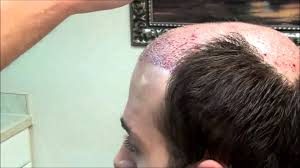
Hair loss can also occur due to a poor diet, stress, vitamin deficiency, thyroid problems, pregnancy, treatments like chemotherapy, or due to ageing.
These conditions are not very serious and can be addressed easily by taking medicines, or stopping certain medicines, and changing your lifestyle. Very often the hair grows back.
If your hair loss is due to genetic reasons, or conditions such as alopecia, your hair will not grow back naturally for that you have to pick some surgical method like.
This can be distressing for you as hair loss can affect your overall appearance. Under such circumstances, based on your general physical health and the pattern and severity of hair loss.
Your dermatologist’s suggestions, you may consider a couple of medical procedures, which can help alleviate your condition.
What are the types of hair transplantation?
The hair transplantation procedures are:
- Hair Transplantation
- Follicular Unit Transplantation (FUT)
- Follicular Unit Extraction (FUE)
What is Follicular Unit Transplantation (FUT)?
A highly advanced technique of hair transplantation, Follicular Unit Transplantation (FUT) is performed in a way.
Which imitates the pattern of natural hair growth and is an ideal choice for people who have large bald areas on their scalp.
This procedure involves removing an entire strip of hair from a ‘donor area’ where hair fall is less and hair growth is still thick.
The area from where the strip is taken is sutured leaving a linear scar on the scalp. The strip containing the hair follicles is divided into grafts consisting of one or two follicles.
The follicular units contain sebaceous glands (oil glands), nerves, a tiny muscle, and some fine hairs called vellus hairs.
Thousands of these follicular unit grafts are placed into tiny incisions made on the bald areas of the patient’s scalp, also known as the ‘recipient areas’, in a single session.
The hair growth from these grafts follows a very natural growth pattern, giving away no tell-tale signs of surgery.
What is Follicular Unit Extraction (FUE)?
Follicular Unit Extraction (FUE), as opposed to the FUT procedure, is a hair transplant in Delhi method in which the doctor extracts the follicular units of hair, from the donor area of your head, one by one.
The surgeon uses a small microneedle, which punches a tiny incision around a hair follicle before extraction. Each unit contains one to four hairs.
These ones, to four hair groupings (called follicular unit grafts), are then transplanted into the balding areas of your head.
In this method thus, there is no need for the surgeon to make a long incision in the donor area, as in the FUT procedure.
This is an ideal method of surgery for patients who like to wear their hair short. This method is also recommended for patients who have a tight scalp or have previously undergone the ‘strip’ or FUT method but with little success.

Am I eligible for hair transplantation?
You are eligible for hair transplantation if you:
- Are 25 years of age or above. The ideal age, However, is 30 years and above.
- Do not suffer from, uncontrolled diabetes, asthma, heart problems, or high blood pressure/hypertension, and are not completely bald or taking blood-thinners or beta-blockers.
- Are suffering from advanced hair loss for more than 5 years, and now your pattern of hair loss is established, leaving you with very low-density hair on the scalp.
What are the risks and disadvantages of the FUT procedure?
The risks and disadvantages of undergoing the FUT procedure include:
- Experiencing numbness, discomfort, or itching, during the process, which is transitory.
- Experiencing shock hair loss after the procedure, which is temporary. The hair usually grows back in 3 to 6 months.
- Local inflammation and infection if proper care is not taken during and after the surgery.
- Scarring at the site where the donor strip is excised.
- The longer recovery period, as this procedure is invasive.
- Avoiding any form of strenuous activity for at least 4 weeks after the surgery.
What are the risks and disadvantages of the FUE procedure?
The risks and disadvantages of the FUE procedure include:
- Hundreds of tiny round white scars on the head caused by the incisions to extract the hair follicles, which will be typically invisible to the human eye after your hair has grown out.
- Numbness.
- Bleeding.
- Itching.
- Swelling around the eyes and forehead, and temporary cyst formation on the areas where the hair is being transplanted.
- Risk of infection, and inflammation, if proper care is not taken during and after the surgery.
- Experiencing shock hair loss, which is temporary and the hair usually grows back in 3 to 6 months.
- Costly, tedious and a time-consuming procedure as individual follicular units are extracted.
- Is not be suitable for large areas of baldness.
What are the advantages of the FUT procedure?
The benefits of FUTprocedure include:
- A large number of follicles can be transplanted in a single session.
- Provides better yield of hair compared to other hair transplant procedures.
- An enhanced, natural-looking cosmetic effect, once the hair grows.
- More affordable than other hair procedures such as FUE.
What are the advantages of an FUE procedure?
Some of the advantages of the FUE procedure include:
-
- It is a less invasive surgery than FUT, with no visible scarring in the donor area.
- It is ideal for short sessions and for patients in the early stages of hair loss.
- It is ideal for patients who would like to sport short hairstyles.
- It is ideal for patients who have no problem in shaving their heads.
- It is also ideal for moustache or eyebrow replacement.

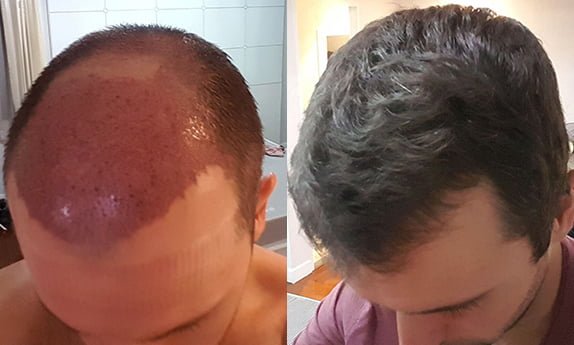

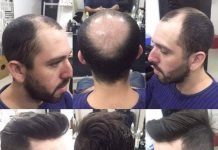

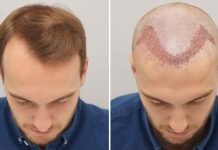
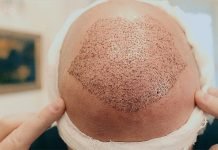
 WhatsApp us
WhatsApp us